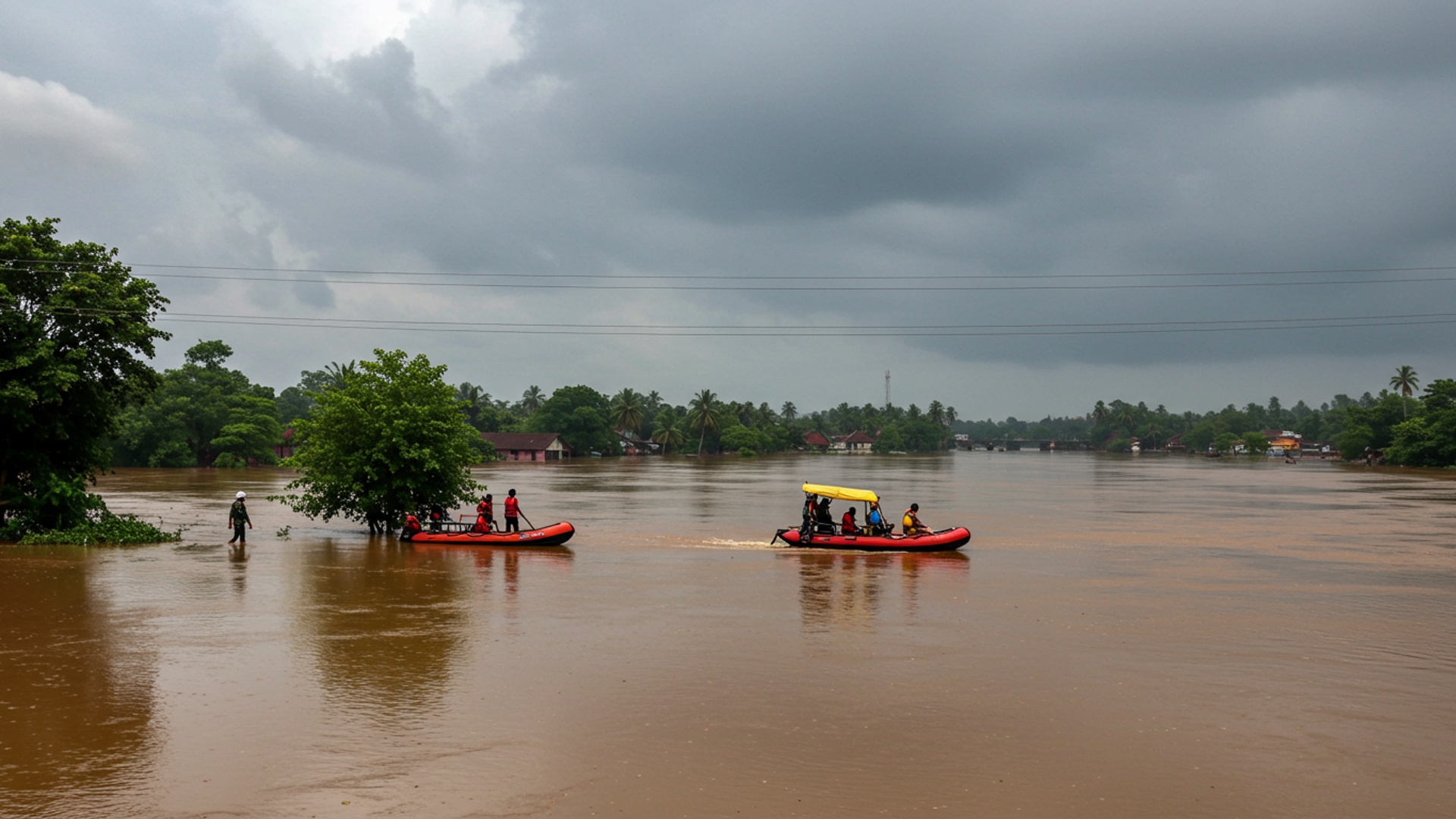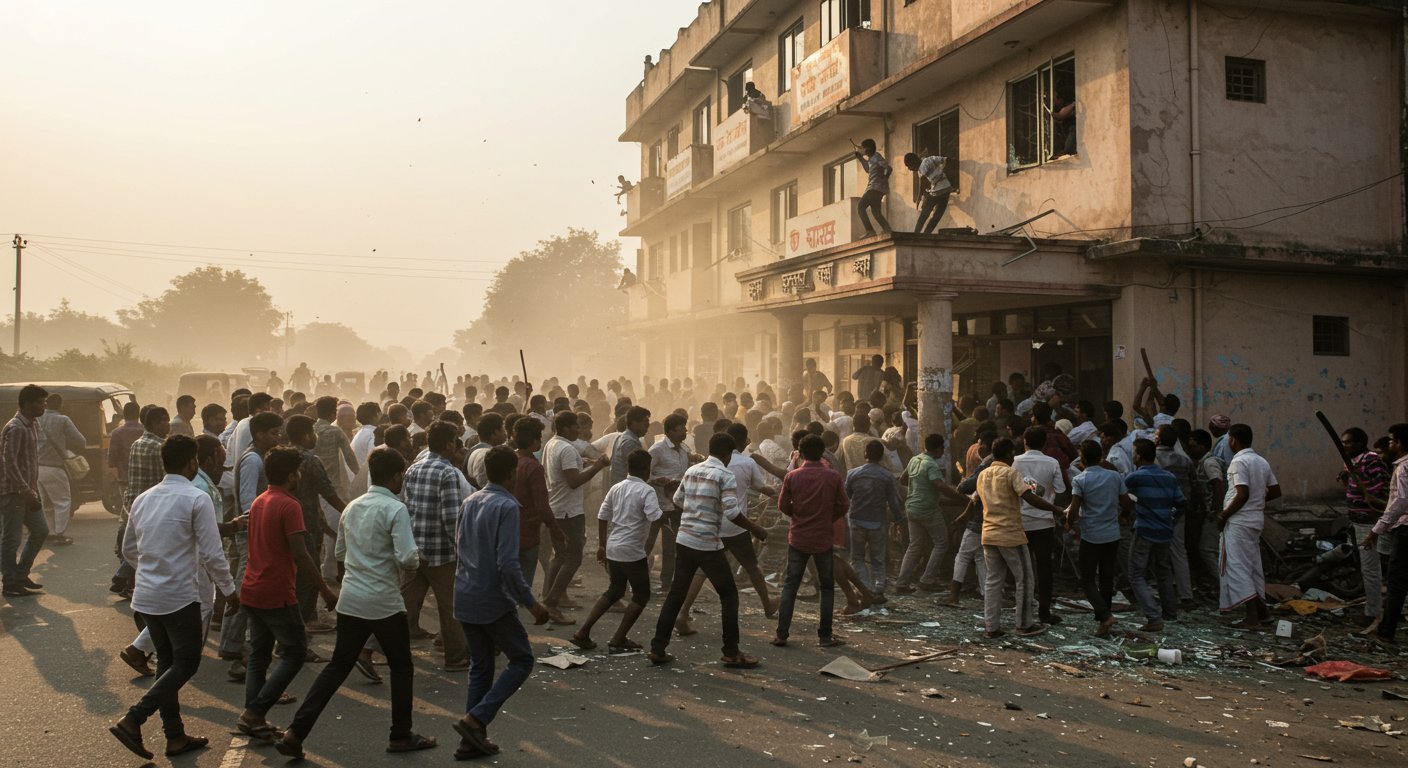Kerala is on high alert as an intense monsoon deluge relentlessly pounds the state, pushing its major dams to dangerous, near-full levels. Weeks of heavy, non-stop rainfall have swelled key reservoirs like Idukki and Mullaperiyar, forcing authorities to closely watch spillway gates for potential opening. This dire situation creates an immediate flood risk for towns and villages along riverbanks, sparking widespread concern and prompting emergency preparations across the region. The state now braces for the possibility of devastating floods, with the relentless downpour showing no signs of stopping, making public safety the top concern as water bodies overflow.
Rising Waters Across the State
Kerala is currently experiencing heavy monsoon rains, with many areas facing intense downpours. The India Meteorological Department (IMD) has warned that the rain will get stronger. This is due to a low-pressure area forming over the Bay of Bengal, expected by Monday, August 18. The state is predicted to see heavy rain until August 20. Many districts have received weather alerts, telling people to be careful. Central and northern parts of Kerala have been hit by heavy rain and strong winds since Thursday, August 14. This weather has caused trees to fall, roads to be blocked. houses to be damaged.
Dam Levels Reach Alert Points
The continuous heavy rainfall has led to a fast rise in water levels in many of Kerala’s essential dams and reservoirs. Authorities are closely watching these water levels, as some have reached critical points. For example, in Pathanamthitta district, two gates of the Kakki reservoir were opened on Saturday, August 16, to lower the water pressure in the dam. In Palakkad district, the Meenkara, Chuliyar. Walayar dams have all reached a “third stage alert.” This means extra precautions are being taken. The Idukki dam, which is Kerala’s biggest hydroelectric project, also saw its water level increase significantly in recent weeks due to heavy rain in its catchment areas. The Mullaperiyar dam’s water level is also rising quickly. When dams get too full, opening their gates becomes necessary to prevent them from overflowing, which can cause floods in areas downstream.
Government Steps for Safety
State government bodies, like the Kerala State Disaster Management Authority (KSDMA), are working to ensure public safety. They are asking everyone to stay alert and follow safety advice. Local government offices have been told to get relief camps ready. They also need to take steps to prevent problems in areas that are likely to be affected by floods. The KSDMA uses early warning systems, sending alerts through phone messages, social media. radio to inform people about possible floods. These warnings are very essential, especially for people living in areas that flood often, so they can leave their homes early and protect their belongings.
The India Meteorological Department (IMD) has issued an orange alert for Kannur and Kasaragod districts. This means these areas can expect very heavy rainfall, between 115. 6 millimeters and 204. 4 millimeters, within 24 hours. A yellow alert is also in place for seven other districts: Ernakulam, Idukki, Thrissur, Malappuram, Palakkad, Kozhikode. Wayanad. These areas might get heavy rainfall, between 64. 5 millimeters and 115. 5 millimeters, in a day.
Effect on Local People
The ongoing heavy rains have already caused problems for many people in Kerala. There have been reports of traffic delays and waterlogging in various places. In some areas, district officials had to declare holidays for schools and colleges due to the bad weather conditions, as seen in earlier heavy rain events this monsoon season. People living close to rivers and in low-lying areas are especially at risk. Fishermen have been strongly advised not to go out to sea because of rough weather and strong winds, which can reach speeds of up to 65 kilometers per hour over the Arabian Sea. Fishing activities along the coasts of Kerala, Karnataka. Lakshadweep have been stopped for now.
Learning from Past Experiences
Kerala has faced severe floods in the past, with the 2018 floods being one of the worst in nearly a century. That event led to many deaths and forced about a million people to leave their homes. During those floods, many dams in the state had to be opened, including the Idukki dam. These past events have taught the state vital lessons. Authorities are now trying to use a complete approach to manage water resources, which involves working together with dam authorities, disaster management groups. local governments to control water levels in reservoirs and release water safely.
Community Preparedness and Safety
The state’s plans for handling floods depend a lot on how local communities get involved. Groups of local helpers, called Community Emergency Response Teams (CERTs), are trained in first aid and rescue work. They are often the first to help during floods, assisting with moving people to safety and providing medical help. The government also suggests that people prepare an emergency kit with vital items. This kit should include things needed for a few days, like food, water, medicine. crucial documents. It is also crucial for people in areas that might flood to know where the nearest relief camps are and move there during the daytime if warnings are issued. People living in houses that are not strong or have weak roofs should be extra careful when strong winds are expected.
Looking Ahead
Officials say they will keep watching the situation very closely, especially in the northern districts, which are expected to get the heaviest rain in the coming days. The aim is to reduce the impact of the heavy monsoon and ensure the safety of all residents. The weather department expects heavy rainfall to continue until August 20. Residents are reminded that continuous rainfall can lead to sudden floods and landslides. They are asked to avoid areas prone to such risks and to follow all safety warnings given by the authorities. ![]()












